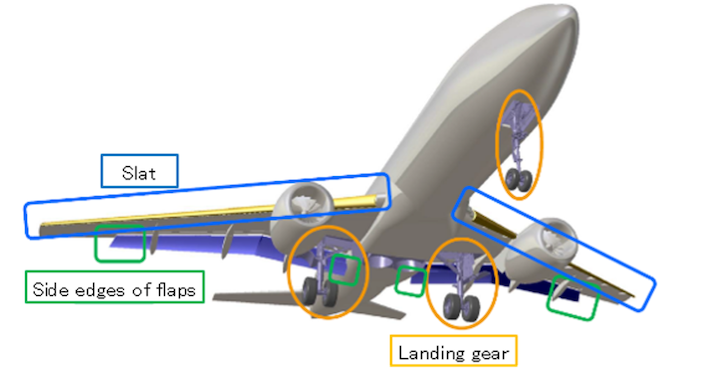Boeing and Japan’s Aerospace Exploration Agency are to partner on flight testing technology designed to mitigate the noise that aircraft make during takeoffs and landings.
The Japan Aerospace Exploration Agency (JAXA) has been running R&D programs to develop airframe noise reduction technology for passenger aircraft with between 200 and 400 seats.
Such medium size passenger aircraft are popular among Japanese airliners, and noise reduction technology for them should be the most effective in reducing overall noise level around airports in the country, said JAXA.
Meanwhile there is discussion to increase the number of flights in the country, for example a new flight route to Tokyo International Airport (Haneda) is being considered, in which aircraft pass over the central Tokyo area at low altitudes for approach. This has raised concerns about aircraft noise and demand for quieter aircraft.
JAXA’s FQUROH (Flight Demonstration of Quiet Technology to Reduce Noise from High-lift Configurations) program ran between 2013 and 2019 to develop airframe noise reduction technology to quieten aerodynamic noise mainly generated from high-lift devices such as flaps and slats, and landing gear.
The new program aims to further develop that R&D by working with Boeing to develop a plan for validation by flight testing the technology.
JAXA plans to identify design concepts for noise reduction devices by March next, which will be followed by the development of the devices for a flight test as well as the development of evaluation plans in 2023 or later. JAXA is committed to contributing to reducing noise around airports with its research and development of airframe noise reduction technology.





